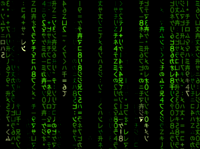Scrolling with pleasure
Posted in Programming on March 19th, 2017 by Pavel – 33 CommentsIn this article I explain what it takes to implementing high-quality smooth / high-precision scrolling on modern computers and why some systems have it while others don’t. Most of the insights came from my work on implementing “true smooth scrolling” in IntelliJ IDEA.
The article complements my previous article “Typing with pleasure”, just like scrolling naturally complements typing in the day-to-day activity of most computer users. Nowadays, some interfaces are based solely on scrolling! Because scrolling is so ubiquitous, any improvement in its functioning automatically improves the user experience and can boost our productivity big time.
The topic of scrolling seems to fascinate a surprising amount of people — computer forums are filled with questions like “Why does Mac OS X trackpad moves so much better than Windows?” or “Why no smooth scrolling on Linux?” . Despite the pry, the answers usually come down to something like “Mac OS uses magic, just deal with it”, which only makes the issue even more mysterious. However, as the third Clarke’s law says “Any sufficiently advanced technology is indistinguishable from magic” — so no actual magic is required — the proper technology is all that is needed.
Although the article contains a great deal of technical details, I hope that it will be interesting not only to computer programmers, but also to people who wonder how scrolling works under the hood, why we have what we have and how we can make the scrolling better.
Contents
All the code examples are available as a GitHub repository.
Continue reading →








![Twitter's waterflow problem [2,5,1,2,3,4,7,7,6]](/images/twitter-waterflow-problem.png)


